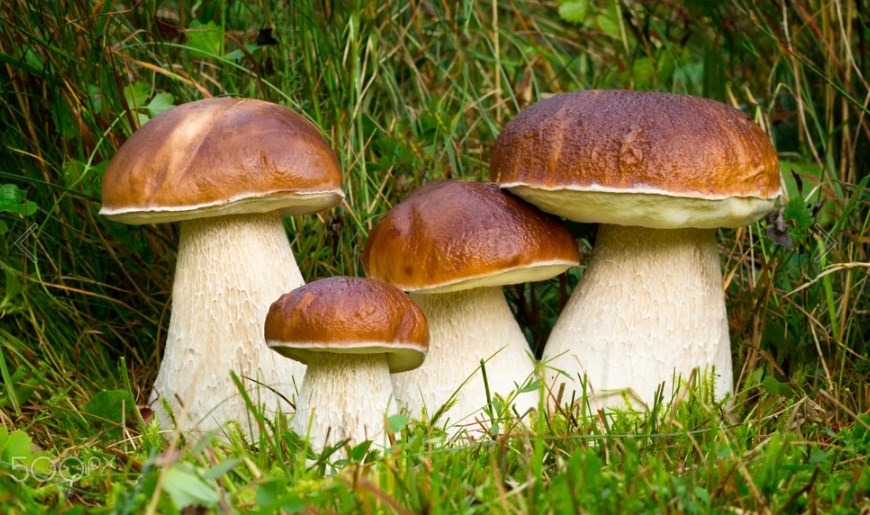
Mushrooms similar to Boletus edulis
The Boletus edulis can be confused with the Boletus aestivalis which has a lighter and velvety hat. The Boletus edulis can also be confused with the Tylopilus fellus which, however, has a bitter taste and a much more noticeable reticulation of the stipe.
The Boletus edulis is just one of the many known porcini mushrooms. In fact, other species of boletes are called the same way porcini and all have characters in common.
These common characteristics in all boletus are the color of the cap that goes from white to brown, the presence of a grid in the upper part of the stipe and the colors of the tubules that are first white and then become yellow and green. Finally, the meat is always in the bank and unchangeable when cut.
Obviously, all of them have a clearly pleasant sweet smell. These are the characteristics that all boletus have in common. It is one of the safest mushrooms to collect because it is easily recognizable and being also one of the most sought after and marketed by great satisfaction in gastronomy.
How to cook Boletus edulis
The young specimens of the Boletus edulis are perfect to be kept in the freezer or even in oil, if you can not cook them immediately. Whole chapels are excellent on the grill. The older ones, if cut into slices and fried, are used for sauces and stews.
Boletus edulis can of course also be eaten raw by cutting them into thin slices. Once harvested, the base of the stipe is cleaned of the soil with a knife. At the same time, we also check if there are larvae, especially on the stipe. If the intention is to dry the fungus, let’s not worry too much about the larvae because they will disappear during the drying process.
IDENTITY CARD
CUP COLOR: Brownish
RANGE HEIGHT: 5-20 cm
RANGE COLOUR: whitish
PORES: white
FLESH: White
SMELL: fungus
TASTE: pleasant
SPORES: brown
HABITAT: Hardwood and softwoods
Did you find what you were looking for? See also here:
- Ganoderma Lucidum
- Armillaria Mellea
- Amanita Caesarea
- Agaricus Bisporus
- Amanita Phalloides
- Coriolus Versicolor
- Flammulin Velutipes
- Marasmius Oreades
- Pleurotus Ostreatus
- Agaricus Campestris
- Macrolepiota procera